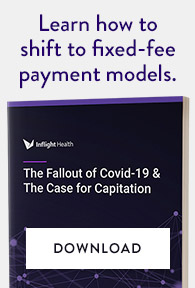Health systems worldwide have implemented fixed reimbursement models as a means of controlling costs and improving efficiency in care delivery. Australia, Canada, Denmark, and the U.S. are just a few countries that have successfully carried out this refactoring of frameworks. Here in the U.S., we saw this transformation start in the early 80’s with the rollout of the Prospective Payment System (PPS) and more recently with the Bundled Payments for Care Improvement initiatives. When success is compared on a global scale, one thing is pretty consistent across all implementations, and that is the use of a casemix classification system.
What’s a Casemix Classification System?
A casemix classification system helps payers and providers organize patients by diagnosis, risks, and/or treatments. Through this type of system, homogeneous groups of like patients are created. From there, health networks can draw correlations between groups, their consumption of resources (costs) and their outcomes. By doing this over time, targets can be established, based on historical data, as to what treatments should be delivered and what costs should be reimbursed.
Why Do Some Refer to it as a Grouper Tool?
There are numerous casemix classification systems out there, both publicly and commercially available. Most systems are supported by software, often referred to as “Groupers”. These products group claims together based on proprietary mappings and business rules.
When all of the marketing jargon is removed, groupers pretty much all have the same objectives:
- Analyze the claim
- Group authorized services into bundles
- Create a running total of costs
- Assign those costs to the responsible party.
Not All Systems Are the Same
While similar in theory, these products are quite unique in their design, and when compared, their outcomes often yield very different results. Because of this, it is imperative that organizations do their homework prior to selecting a grouper solution. This includes conducting a thorough needs assessment of the organization’s care delivery and reimbursement models as well as researching the product. Figuring out where to start can be the most challenging aspect, so we’ve taken the liberty of calling out some of the more common grouper solutions available for your review, as well as some additional resources and reports to get you moving in the right direction.
Commercial Solutions:
- 3M’s All Patient Refined Diagnosis Related Groups (APR-DRGs)
- Ingenix’s All-Payer Severity-Adjusted Diagnosis Related Groups (APS-DRG), Episode Treatment Grouper (ETG), Episode-Risk Group (ERG)
- Milliman’s MedInsight Health Cost Guidelines grouper (HCG)
- Truven’s Medical Episode Grouper (MEG)
Public Solutions:
- CMS’s Medicare Severity Diagnosis Related Group (MS-DRG), Healthcare Common Procedure Coding System Diagnosis Related Grouper (HCPCs -DRG)
- AHRQ’s Research and quality grouper system – Clinical Classifications System (CCS)
Additional Resources:
- National Quality Forum – Evaluating Episode Groupers: A Report from the National Quality Forum
- Office of the Assistant Secretary for Planning and Evaluation (ASPE) – Clinical classification systems review
- Pepperdine – ITSM Project -Diagnosis Related Groups Software Analysis




